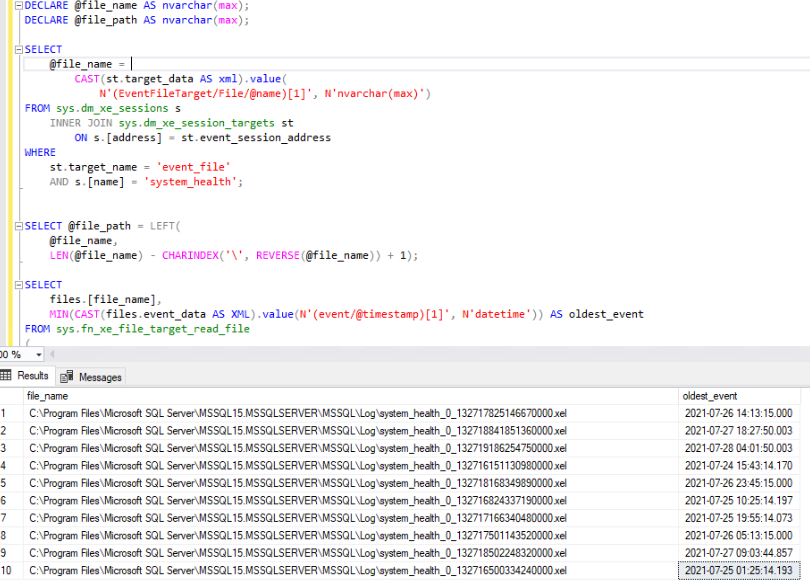SET NOCOUNT ON;
DECLARE @retention INT = 7,
@destination_table VARCHAR(500) = 'WhoIsActive',
@destination_database sysname = 'SQLMonitor',
@schema VARCHAR(MAX),
@SQL NVARCHAR(4000),
@parameters NVARCHAR(500),
@exists BIT;
SET @destination_table = @destination_database + '.dbo.' + @destination_table;
--create the logging table
IF OBJECT_ID(@destination_table) IS NULL
BEGIN;
EXEC dbo.sp_WhoIsActive
@get_full_inner_text = 1,
@get_plans = 1,
@get_outer_command = 1,
@find_block_leaders = 1,
@get_transaction_info = 1,
@return_schema = 1,
@schema = @schema OUTPUT;
SET @schema = REPLACE(@schema, '<table_name>', @destination_table);
EXEC ( @schema );
END;
--create index on collection_time
SET @SQL
= 'USE ' + QUOTENAME(@destination_database)
+ '; IF NOT EXISTS (SELECT * FROM sys.indexes WHERE object_id = OBJECT_ID(@destination_table) AND name = N''cx_collection_time'') SET @exists = 0';
SET @parameters = N'@destination_table varchar(500), @exists bit OUTPUT';
EXEC sys.sp_executesql @SQL, @parameters, @destination_table = @destination_table, @exists = @exists OUTPUT;
IF @exists = 0
BEGIN;
SET @SQL = 'CREATE CLUSTERED INDEX cx_collection_time ON ' + @destination_table + '(collection_time ASC)';
EXEC ( @SQL );
END;
--collect activity into logging table
EXEC dbo.sp_WhoIsActive @get_full_inner_text = 1,
@get_plans = 1,
@get_outer_command = 1,
@find_block_leaders = 1,
@get_transaction_info = 1,
@destination_table = @destination_table;
--purge older data
SET @SQL
= 'DELETE FROM ' + @destination_table + ' WHERE collection_time < DATEADD(day, -' + CAST(@retention AS VARCHAR(10))
+ ', GETDATE());';
EXEC ( @SQL );


